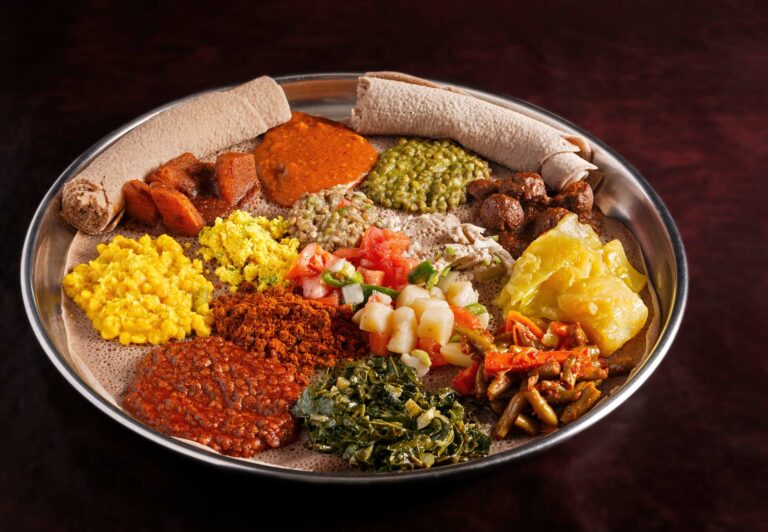Introduction to Ethiopian cuisine
Ethiopian cuisine is one of the most unique and diverse culinary traditions in the world. It is a reflection of the country’s rich cultural heritage and history, with influences from different regions and ethnic groups. Ethiopian cuisine is characterized by its complex and flavorful dishes, which are often served with injera, a spongy sourdough flatbread made from teff flour. The cuisine is also known for its use of spices, herbs, and seasonings, which add depth and complexity to the dishes.
Rich flavors and diverse ingredients
Ethiopian cuisine is famous for its rich and diverse flavors, which are created using a wide range of ingredients such as fresh herbs, spices, and vegetables. Some of the most popular spices used in Ethiopian cuisine include berbere, a fiery blend of chili peppers, garlic, ginger, and other spices, and mitmita, a blend of dried chili peppers, cardamom, and other spices. The cuisine also incorporates a variety of meat and vegetarian dishes, with lentils and chickpeas being popular protein sources.
Staple foods in Ethiopian cuisine
Injera is the most iconic staple food in Ethiopian cuisine. It is made from teff flour and is usually used as a base or wrap for the various dishes served in Ethiopian cuisine. Other staple foods include wot, a thick stew made with meat or vegetables, and tibs, a sautéed meat dish with vegetables and spices. Ethiopian cuisine also features a variety of side dishes, including salads, lentil dishes, and vegetable dishes.
Unique cooking methods and utensils
Ethiopian cuisine has unique cooking methods and utensils that are essential to the preparation of traditional dishes. One such utensil is the mitad, a traditional clay oven used to cook injera. Another unique utensil is the mogogo, a clay pot used to cook stews and soups. Ethiopian cuisine also incorporates the use of traditional spice grinders, such as the mitad mesob, to grind spices and herbs for seasoning dishes.
Famous Ethiopian dishes and their origins
Some of the most famous Ethiopian dishes include doro wat, a spicy chicken stew with berbere and served with injera, and kitfo, a raw minced beef dish that is seasoned with spices and served with injera. Other popular dishes include injera with a variety of stews and vegetarian dishes, such as shiro, a spicy chickpea stew, and misir wat, a red lentil stew. These dishes have their origins in different regions and ethnic groups in Ethiopia and reflect the diversity of the cuisine.
The role of coffee in Ethiopian cuisine
Coffee plays a significant role in Ethiopian cuisine and culture. It is believed that Ethiopia is the birthplace of coffee, and the country produces some of the highest quality coffee beans in the world. Coffee is often served after meals as a sign of hospitality and is prepared using traditional methods, such as roasting the beans over an open flame and brewing them in a jebena, a traditional clay coffee pot.
Cultural significance of sharing meals
Sharing meals is an important cultural tradition in Ethiopian cuisine. Meals are often served family-style, with different dishes placed on a shared platter and eaten with injera. This communal way of dining reflects the importance of hospitality and community in Ethiopian culture.
Popular Ethiopian restaurants worldwide
Ethiopian cuisine has gained popularity around the world, with Ethiopian restaurants and cafes opening in many major cities. Some of the most popular Ethiopian restaurants include Awash Ethiopian Restaurant in New York City, Mesob Ethiopian Restaurant in London, and Addis in Cape Town, South Africa. These restaurants offer a taste of authentic Ethiopian cuisine, with traditional dishes served in a warm and welcoming atmosphere.

